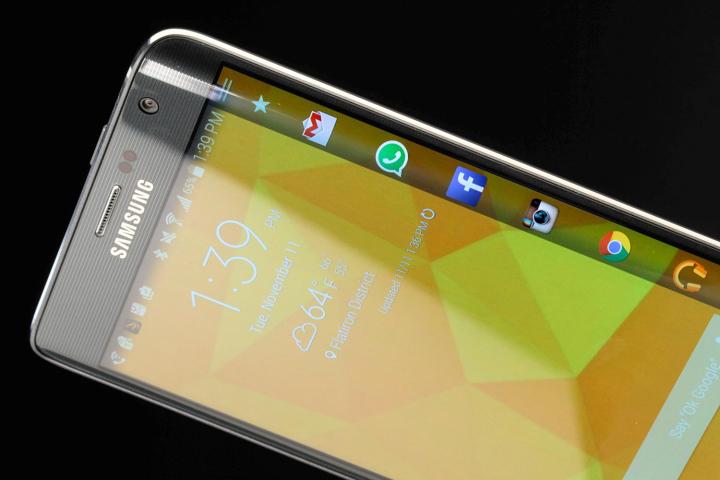
We’ve already seen the first example in the Galaxy Note Edge, where the screen cascades over the side of the device, creating a second screen used for shortcuts, notifications, and dedicated apps. The Samsung executive talks about the difficulty in making a unique, attractive design in a world obsessed with large displays (ironically, a shift Samsung itself promoted), and says “A curved screen is a big solution for overcoming those challenges.”
Samsung’s next major smartphone release is likely to be the sequel to the Galaxy S5, tentatively known as the Galaxy S6, which has been referred to as a “dream phone,” in several rumors already. An analyst, speaking at a conference in Korea, discussed the possibility of the Galaxy S6 using a double edged cascading display, taking it a step beyond the Note Edge.
However, while Samsung is responsible for making the curved displays, it’s going to need the help of developers to ensure it doesn’t just become a forgettable gimmick. The Note Edge’s additional display area has some handy tools, but Samsung has to encourage innovation outside of the software it builds into the phone, if people are to see the tech as something worth investing in. Simply making the screen look different may not be enough.
Samsung isn’t the only one thinking unusual screen technology will make more people buy its expensive smartphones. LG Display recently showed a three-year plan for its Plastic OLED flexible screens, which it wants to bring to smartphones, tablets, computers, and televisions. It has already used a version of the bendy, hard-wearing display on the G Watch R and the G Flex smartphone.
Editors' Recommendations
- I compared Google and Samsung’s AI photo-editing tools. It’s not even close
- This Samsung tablet with S Pen stylus just had its price slashed to $199
- Samsung’s newest Android tablet is a perfect iPad alternative
- Samsung Galaxy Z Fold 6: news, rumored price, release date, and more
- Samsung may have a big surprise in store with its next folding phone




